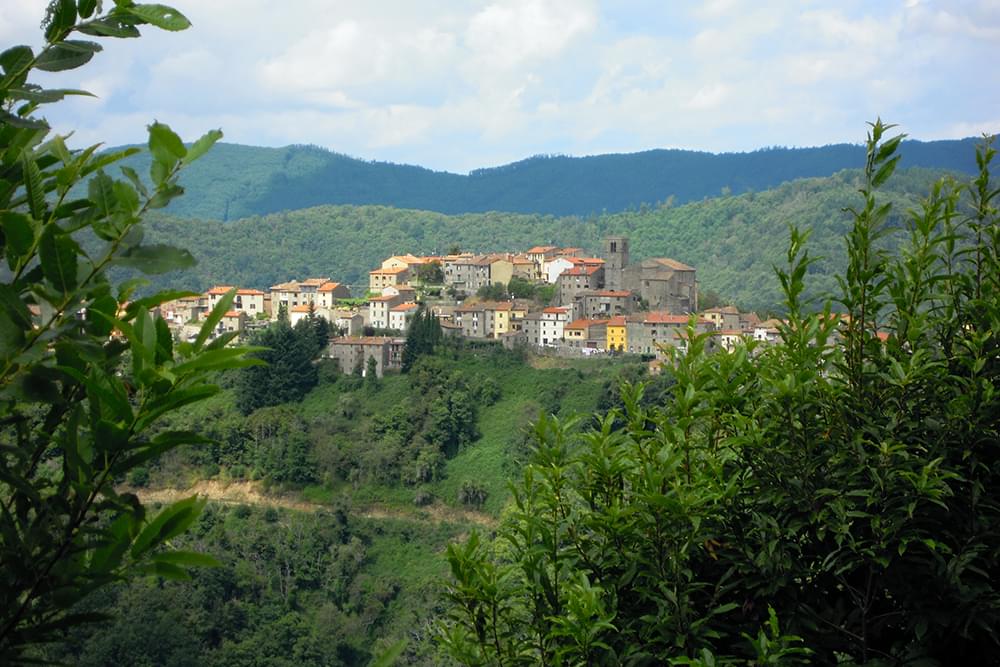
The province of Pistoia lies in the northern part of Tuscany and is often overlooked in favor of more famous Tuscan destinations. Yet this area holds some of the most authentic and enriching experiences in the region. It is a land of forested mountains, artistic towns, fertile valleys, and timeless traditions.
With a perfect blend of nature, culture, and wellness, the province of Pistoia appeals to travelers seeking both relaxation and exploration. It is also ideally located between Florence and Lucca, making it easy to access while offering a more tranquil and immersive journey into Tuscany鈥檚 soul.

The Valdinievole area in the southern part of the province is known for its rolling hills, olive groves, and slow rhythms of life. This is where the Tuscan countryside shines in its most peaceful form, with quiet villages such as Montecatini Alto, Uzzano, and Buggiano offering beautiful views and historic charm.
The region is also dotted with villas and farmhouses that have been turned into agriturismi, offering guests a chance to experience rural Tuscany firsthand. Walking trails, farm-to-table cuisine, and local markets add to the appeal of a destination rooted in tradition and agricultural heritage.
One of the most famous destinations in the province is Montecatini Terme, a historic spa town that has drawn visitors for centuries with its healing thermal waters. The town is home to grand Art Nouveau architecture, historic bathhouses, and a lush park filled with fountains and shaded promenades.
Montecatini Terme offers not only wellness treatments but also a cultural experience. Music festivals, art exhibitions, and elegant cafes create an atmosphere of sophistication and calm. A short funicular ride takes you up to Montecatini Alto, where medieval charm and sweeping views await.
To the north, the landscape changes dramatically as the Apennines rise to form the Pistoia Mountains, or Montagna Pistoiese. This area is a paradise for nature lovers, hikers, and skiers. Dense beech and chestnut forests cover the hills, crossed by rivers and mountain streams that add to the region鈥檚 natural richness.
The villages of Cutigliano, San Marcello Piteglio, and Abetone are gateways to outdoor adventure, offering everything from winter sports to summer trekking. This part of the province feels remote and wild, and its peaceful atmosphere provides a welcome escape from the modern world.
The province of Pistoia is filled with towns and villages that preserve ancient artistic and craft traditions. Pescia, for example, has long been known for its papermaking, and its charming historic center includes churches and bridges that reflect centuries of prosperity and creativity.
Nearby Collodi, the birthplace of Pinocchio鈥檚 author Carlo Lorenzini, is a magical spot where fantasy and history blend. The famous Pinocchio Park and the lavish Villa Garzoni Gardens draw families and culture lovers alike. Every town in this province has something unique to offer, often tied to local craftsmanship or folklore.
The hills and valleys of the province are home to farms and olive groves that produce some of the finest olive oil in Tuscany. This oil is known for its peppery taste and golden-green color, and it forms the base of many local dishes. Fresh produce, chestnuts, mushrooms, and cured meats also play an important role in the local cuisine.
Traditional dishes include farinata, wild boar stews, soups made with beans and vegetables, and desserts flavored with honey and dried fruit. In autumn, chestnut festivals fill the villages with the smell of roasted chestnuts and sweet necci, a pancake made from chestnut flour served with fresh ricotta.
The province of Pistoia has a strong artistic identity, evident in its churches, museums, and public spaces. The main town of Pistoia itself is home to stunning Romanesque and Gothic architecture, as well as important artworks from the Renaissance and Baroque periods. The Cathedral of San Zeno and the Baptistery are among the finest in Tuscany.
In the countryside, small chapels and monasteries provide quiet places for reflection. The Franciscan convent in Giaccherino and the Abbey of San Baronto are examples of how faith and art come together in this region. These sites are often surrounded by nature, enhancing their atmosphere of serenity and devotion.
Throughout the year, towns and villages in the province come alive with festivals that showcase local culture. The most famous is the Giostra dell'Orso in Pistoia, a historic jousting competition held in the main square every July. The event features medieval costumes, music, and a strong sense of civic pride.
Other festivals include olive oil tastings in Vinci and Lamporecchio, flower parades in Pescia, and mountain fairs in Abetone. These gatherings are deeply rooted in community life and are often accompanied by music, dance, and food that reflect the season and local character.
The province of Pistoia is one of Tuscany鈥檚 most rewarding destinations, especially for those who wish to escape the well-trodden tourist trails. It combines spa culture, mountain adventure, artistic richness, and village life in a compact but diverse territory that feels both welcoming and deeply authentic.
Whether you are looking to relax in thermal waters, hike through ancient forests, enjoy slow food in rural settings, or immerse yourself in 色中色 history and culture, the province of Pistoia offers a complete and unforgettable experience. It is Tuscany as it has always been鈥攓uiet, beautiful, and full of soul.



